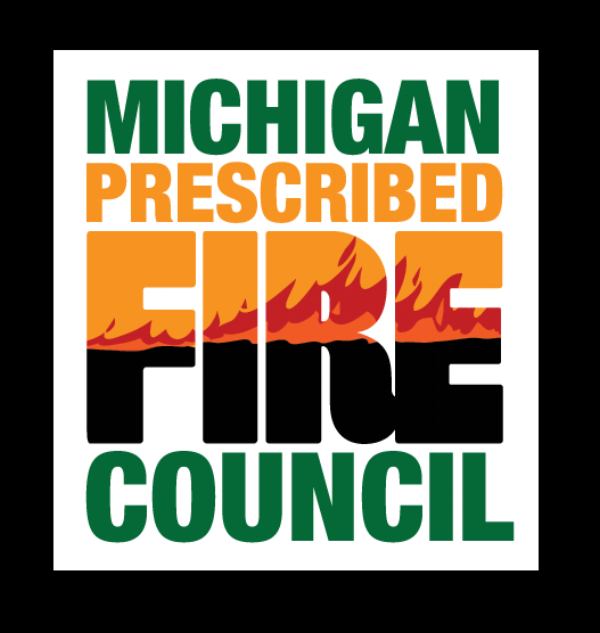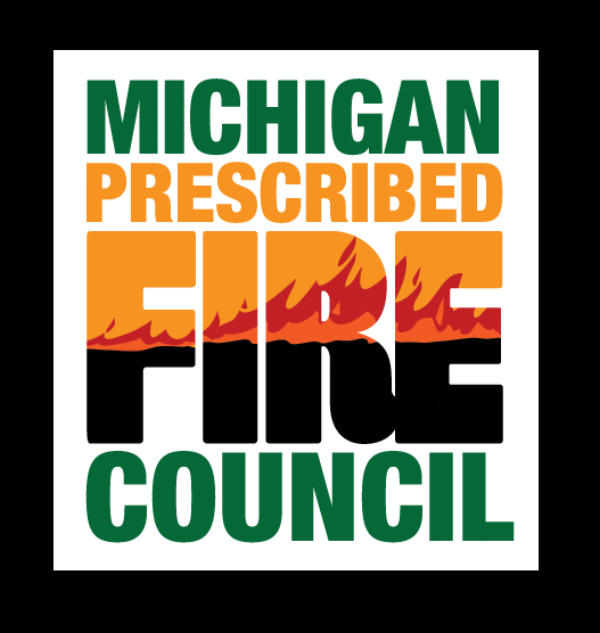Back in July, when we were facing yet another wave of record-breaking temperatures, a team of 16 students and 5 instructors met at Fort Custer Training Center, an active Army National Guard base, to take part in a National Wildfire Coordinating Group (NWCG) training: S-212, Wildland Fire Chainsaws. They met inside a recently-constructed military educational building, boots on foot and greasy chainsaws in tow. Putting down garbage bags to set their chainsaws on, they mused about what might happen if the room got too dirty. “Think they’ll get a drill sergeant to make us clean it up?”
Our instructors from the Forest Steward’s Guild blended classroom time with field-work, going back and forth between dense, informative PowerPoints about chainsaw anatomy and behavior, proper tree-felling technique, and the potential pitfalls of using a tool as dangerous as a chainsaw. After in-class sessions, students and instructors suited up in full PPE, their thick Nomex pants covered in heavy chaps, and set out for the dense Michigan forests.
Students began as spectators, watching the instructors fall their selected trees, while taking note of their technique. They quickly became involved in the action, as instructors had their students buck and limb the trees they’d felled. Bucking and limbing is a delicate process, requiring a deep knowledge of chainsaw mechanics, proper body positioning, and how wood reacts to being cut. This part of the process was intense to watch, as the students, many of whom had only used chainsaws a handful of times in their lives, were forced to trust the training they’d been given, and to rely on their instructors to correct any mistakes. They moved slowly and deliberately, being sure to test every movement for safety, knowing that their every move was being factored in to their evaluation. The instructors were involved just the right amount, stepping in when adjustments needed to be made, but allowing the students a great degree of independence in discovering what worked, and what was less effective. After a full day of bucking and limbing, students were visibly exhausted, covered in sweat from the near-hundred-degree weather.
The next day had students taking the reins. Instead of having instructors fell trees for them to work on, they were tasked with taking down trees themselves, beginning to end. They picked their trees, decided where to let the tree come down, and then went to work cutting down their trees. This proved extremely difficult, as the task of felling a tree requires precise angles, deliberate decision-making, and an intense awareness of how the tree is behaving as it comes down. One wrong move could send the tree towards onlookers, or worse, on the sawer themselves. Thanks to the diligence of the instructors from the Forest Steward’s Guild, we had no accidents or injuries, regardless of the over-100-degree heat our teams were working in. After a brutal, sweaty final two days, teams grabbed their Gatorade and regrouped at the classroom where we’d started the training. They were exhausted but visibly proud of what they’d learned, what they’d accomplished in just a week’s time. All those in attendance passed with flying colors, and were awarded their S-212 certification, ready to become qualified as Basic Fallers (FAL3) on a fireline.
Using a chainsaw is a scary thing for most people. They’re loud, difficult to control, and their misuse can have awful consequences. But after being a spectator to this training, I can firmly say that my views on the chainsaw have changed. I no longer see it as a monster to be feared, but as a powerful piece of equipment to be respected, understood, and mastered. The instructors delivering this training made it clear that chainsaws are just as safe as you make them, and with enough learning and practice, you can make them safe a safe and effective tool on the fire line.
Paul Mayer, MPFC Administrator/Treasurer












